For previous chapters click here
I attach more photos for these chapters online, as email gets glitchy after one image. So click above for more.
Uncontacted Tribes
The truth is usually more interesting than the myth
Eduardo threw his arms in the air, arched his back and craned his head skyward, his face shot with pain. Dressed in his traditional Ashéninka long black robe and pink shawl he looked almost comical, reminding me weirdly of a Ninja Turtle, as he explained the position he’d found his three-month-old son in – buried in the sand. An arrow through his neck and two more through his stomach. His wife lay dead down by the river, pierced with multiple arrows, and his six-year-old daughter was nowhere to be seen.
It was a tit-for-tat killing. The Mascho Piro, the uncontacted tribe I’d glimpsed in Chapter 11, were retaliating in a brutal back and forth that had been going on forever, although they’d well overstepped the mark on this occasion. Eduardo returned to his village, enlisted the help of his father, and the two travelled a day downriver to Puerto Breu to phone the boss of the mahogany mafia. He sent them guns, no doubt in exchange for some concession on their land. When they returned to the forest they formed a posse, hunted down the Mascho Piro and massacred over a hundred of them. Our boatman Jorge admitted to killing fifteen. He explained in a sullen voice how he’d found a girl he thought was cute and decided to keep her, but his father said they were all evil and shot her in the face.
The next day I photographed Eduardo’s baby boy, shot with three arrows and buried alive, now a strapping fifteen-year-old – a miracle indeed. Handsome and self-possessed, he was wearing a football top and sitting on a log outside his house, his older sister standing behind him, her hands on his shoulders, both of them increasingly bored with my instructions for a shot.
The story of isolated tribes in the Amazon was my first assignment for National Geographic that only featured people. Over the years I’d drifted towards conservation stories that straddled the line between men, women and animals, but I’d never had the confidence to shoot a story just about humans. My editors, however, were keen that I tried.
A couple of years earlier, while on assignment in Manu National Park, I’d shot a portrait of a nine-year-old Machiguenga girl called Yoina. She was cartoon cute, with a button nose and huge eyes, which stared at my lens as she sat up to her neck in the Fiero River during her daily swim. Nestled into her thick black hair was a tiny baby saddle-back tamarin, distressed and emaciated, one of the smallest monkeys in the world. Back then I was messing around with a new lens and decided to set it so that only Yoina’s eyes and the monkey’s very much smaller eyes were in focus. So while she sat in the water, throwing her terrified pet monkey into the river for fun, I told her to look right at me and fired off a frame or two.
The resulting shot was mesmerising. Yoina’s dark expression and her refusal to smile added a deep intensity to the image. The tamarin, bedraggled and devil-like within the tangle of her hair but which you’d have to double-take to notice, pierced the lens with its stare, squatting on her like a forest spirit. The picture captured the beauty and innocence of a world I could barely understand, one where there were no dividing lines between man and beast, and beast and any other worlds. When the story was published the following year the image instantly become iconic. Perhaps if I hadn’t taken it by accident, I’d have basked in my own glory. But it was an unplanned fluke and just one of a hundred or so grabbed images. Apart from knowing how to use my camera and lens, I’d absolutely no idea how to plan and pose a portrait.
Editor in chief Susan Goldberg had always regretted not putting Yoina’s image on the cover of the magazine when the Manu story came out. Instead, she’d chosen an image of a hand over the face of Tutankhamun, which referenced a story on tomb raiding and turned out to be the worst-selling edition in years. As a result she apologised to me every time she saw me, until it became a running joke between us. The Manu story also featured the image I’d taken years earlier of the Mascho Piro girls standing on the log on the edge of the river. I’d never previously let it be published or put online for fear of it being sensationalised by the press, but felt that it was now important to the coverage. These images taken in Manu sowed the seeds of a bigger, more interesting story.
When I pitched ‘Uncontacted Tribes’ to Susan, she went for it straight away. It was obvious National Geographic territory. I explained to her that I wanted to demystify the subject and normalise it, by bedding it in fact rather than relying on sensationalism to attract readers. I began by referring to the tribes, not as uncontacted, but as isolated – a more accurate term that describes people living in ‘voluntary isolation’ (coined by ethnobotonist Glenn Shepard). National Geographic and other media outlets had been historically guilty of perpetuating exaggerated narratives and old-fashioned ideas of the ‘noble savage’; yet the truth was far more interesting. Susan asked me about the visuals and how the coverage would look, and I explained that I was going to tell the story around the edges. I’d photograph and interview the people who encountered isolated tribes to try and gain an understanding of how they lived, and meeting people who’d come out of the forest to understand their lives and how the transition they’d made had affected them. I walked out of her office half an hour later with a cover story. A cover story on a subject I wasn’t going to see, let alone photograph.
The history of isolated tribes in the Amazon was as tangled and complex as the forest itself. It was a story of brutality, genocide, superstition and, above all, confusion. Beyond the green curtain lay a world whose physical aspect was almost impossible to navigate. Within it lay a world of a million pathways. The truth could be found down any one of them – that is, of course, were you stupid enough to believe in ‘the truth’ in a place where it had no currency.
My understanding of these tribes sat somewhere in among all this confusion. After nearly twenty years working in the Amazon my fascination for the subject had grown substantially, along with my understanding of the threats the Amazon faced. The previous few years, working with Gavin on my land and covering stories in Manu, had really moved me. As a result I’d burdened myself with many of the Amazon’s problems and had committed myself to trying to fix them. And to me, that meant bringing the story of the isolated tribes out of the forest.
The relationship that isolated tribes have with the outside world isn’t, however, with us; it’s with the people that live closest to them, and it’s they who can tell us most about them. So I’d travelled to Puerto Breu on the western side of Alto Purus National Park to find out more. Alto Purus sits almost on top of Manu – it’s much larger but remains essentially closed to the outside world, with no tourism, no legal commercial activity and no roads, apart from those scratched into its remoter edges by illegal loggers, and due to its inaccessibility it’s only occasionally visited by rangers, along major river access routes, and then only around its fringes. To the north lies Brazil, where the forest almost immediately hits the cattle ranches of Acre and Rôndonia, where Dino and his family live – perhaps a hundred miles away.
Accompanying me on this three-week expedition into the edges of the Purus was Chris Fagan, or ‘C Fag’ as he was styled on the Delta upgrade list on our flight down. Chris was the director of an NGO called Upper Amazon Conservancy. He’d set UAC up to help protect and conserve areas of forest for the isolated tribes around the national park. Chris had been assigned as writer by the magazine for the Peru part of the story on uncontacted tribes. I liked Chris a lot; he was half sensible, calm and pragmatic, half college jock, although the jock half was kept in check by his slight lack of self-confidence. Studious and hardworking, he was usually in some sort of turmoil or other. By coincidence we were friends, and at the time we both lived in the town of Jackson, Wyoming.
Chris had created a ‘Vigilance Committee’ among the people who lived in the Purus region. Their job was to patrol the waters and forests that bordered the national park, checking for illegal logging activities, narco trafficking and poaching, and noting any signs of isolated tribes like the Mascho Piro and Yaminahua, with their sub-groups the Chitonahua and Mastanahua. We took a boat with five Ashéninka guys from the local vigilance committee one morning up to the border of the Murunahua Indigenous Reserve, which borders Alto Purus park further upstream. This reserve was created to protect isolated tribes. Along the way, we stopped at our local contact Bernardino’s house. He apparently saw the Mascho Piro regularly as they often passed by on their annual migration. Chris was still trying to figure out their route, which appeared to be based on food availability, particularly turtles in the dry months. Bernardino lived in a forest clearing, called selva virgen, ‘virgin forest’, with a few other people, all of whom were eating smoked tapir when we arrived, washing it down with large, dry chunks of boiled yucca, all of which was covered in ants. It looked revolting, especially as the tapir hadn’t actually dried properly in the smoking process so some of it was rotten. Chris nobly felt obliged to try it.
Bernadino showed us around his garden and pointed out the spot where the Chitonahua often came to raid his crops, particularly his tobacco plants as they liked to smoke. He explained that they’d always run off when they saw him, but over the years had stolen a lot from him – pots, pans, machetes. He said that one time they stole pretty much everything he owned. He then began talking about the Mascho Piro and walked us down a slippery winding path to the river. In the tall grasses and scrub along the river’s edge he pointed to the ground and told us that the previous year a Mascho Piro girl had given birth on the spot. She’d been guarded by men with bows and arrows throughout, but he’d nonetheless brought her food. He then turned and gestured to the other side of the river, to show us the route the Mascho Piro took on their migration, when they headed into the reserve and national park.
Berandino’s relationship with the isolated Chitonahua, who not only regularly stole from him and the Mascho Piro but had also apparently killed his family members in the past, seemed bizarre to me. He only ever spoke of them in fond terms and with concern for their well-being. As we travelled across the region, the same seemed to be true in other communities. I found it hard to understand, especially after the massacre that Eduardo had told me about. Perhaps the growing pressure on the forest and other threats from outside had landed them all in the same predicament, easing the tensions between them (although it could just as easily have inflated them). A weird, delicate truce seemed to have evolved – love thy neighbour, occasionally kill thy neighbour, but then let thy neighbour rob you and regard them with general admiration when they do.
Chris had known the former isolated tribesman Shuri for a long time and saw him as the centrepiece to our story. The flight to meet him took us across the northern edge of the park, within just a few miles of Brazil. We flew in a small Cessna, and I shot images out the window of the endless jungle, forbidding and remote, dissected by long, snaking rivers. An hour into the journey, Chris pulled up a GPS point of an area of forest that been cut down, something he’d noticed on a previous flight. As we neared it a few minutes later, he pointed to a hillside and we could see immediately that it was a settlement. I zoomed my lens in and shot a few images of it, but asked the pilot not to get any closer.
Chris and I had previously agreed that if we found an uncontacted settlement from the air we’d steer clear of it. Neither of us felt comfortable with the images of isolated tribes aiming their arrows at planes and helicopters that we’d seen in the news. It wasn’t just intrusive; it might cause the tribes to move elsewhere, and we didn’t want that. On the display on the back of my camera I zoomed in on the images I’d just taken and examined them for people, but there were none.
We agreed on a second pass, a little closer, as there didn’t appear to be anyone there. The settlement was small, just a line of tiny, thatched huts made of palm fronds draped together to form elongated domes. Leading off from them were a number of winding paths heading down to some felled trees and a couple of small chacras (agricultural fields) sown with what we suspected to be yuca plants. Chris assumed the community belonged to the isolated Mastanahua tribe, and as the crow flew they weren’t all that far from Shuri, who had come out of the forest in the same area a decade or so previously, lured out by gringo evangelical missionaries.
A few days later, after a long boat journey up the Curanja River, we met Maria, Shuri’s mother-in-law, who lived in a palm shelter behind a ranger post. Maria’s three dogs barked aggressively, straining on their leashes as we approached, so we held back until she appeared from her shelter to scold them. She looked distressed and began ranting loudly in Mastanahua, which none of us understood, trembling as she spoke and throwing her arms around dramatically. Emotion contorted her face as if she were an upset child, although she looked every bit the forest witch.
She became more animated when Katarina, the cook for our trip, appeared. Katarina was half Mastanahua so could speak the language. I took a few pictures of Maria after she’d calmed down and sat in the grass, her dogs still restless in the hut behind her. One lay in a small hammock, woven from reeds. A fire smouldered thick beneath a larger hammock, which it had blackened. Chris explained that Maria slept amid the smoke to keep the biting flies away. I composed the scene and photographed her as she talked quietly to Katarina. Her face was broad, patterned with the deep lines of age, framed by hair that was spiky on top and descended into a scraggy mullet. She looked wretched – dressed in rags, her face pained and broken.
Her daughter Janeth and son in-law Shuri had apparently banished her from their house a kilometre or so away in the forest, threatening to kill her with machetes if she returned. Her expression, even after the simplest questions like ‘How did you make fire before matches?’ always seemed explosive, bordering on the hysterical – a kind of emotional Tourette’s. I couldn’t imagine how conversations would have worked with Janeth and Shuri when questions of real importance had to be dealt with. I took out my old Rolleiflex medium-format camera and fired off a few portraits of Maria before telling her she looked beautiful.
‘Everyone says that when they come here,’ she shouted at me.
Katarina explained after translating this that she always asked people who stopped at the ranger post to take her back downriver with them, but nobody ever did.
After lunch we made the short boat journey to Shuri and Janeth’s house. The Curanja was thin at its headwaters and the drop-off point for the house was marked by just one of a million fallen trees that lined the river. Shuri greeted us without a smile as he met us off the boat. He was wiry and small, no more than five foot two, with a crimson skullcap that covered his shaved head and a silver disc hanging from his septum. He wore a pair of striped football shorts, which, according to Chris, replaced his traditional bark belt. Tight strings were tied below his knee, one of which was beaded, and he walked barefoot.
Shuri guided us up a hill along an almost invisible path through the thick forest until we arrived at what looked like a huge pile of dead palm fronds but turned out to be fairly extensive hut system. He began shouting as we walked around the structure and a dog barked from within. His wife Janeth appeared and the two began shouting at each other. I peered into the hut. It was almost completely dark inside, its dead palm walls black with smoke soot. I could see the outline of a couple of emaciated dogs lying in hammocks but little else.
Janeth was one of Shuri’s two wives, as he’d also married her sister Elena, who was away in the forest hunting. Janeth looked like a younger version of her mother and wore the same silver disc in her nose as Shuri. Her face was painted with little faded blue dots that strung out along her cheeks, around her chin and across her forehead. She wore an immaculate bright red and white Arsenal football top, complete with the Nike tick opposite the club badge, a gift from the park rangers stationed down river, which seemed completely out of place in the middle of the forest. Her expression, although not as violently emotional as her mother’s, was still highly animated and never seemed to settle into contentment.
As I photographed the couple, grief overcame them – they complained that their dogs had died. Twenty-two had apparently starved to death at their feet, leaving just three, which they expected to die soon. They complained of permanent headaches and fevers, worms, botflies and lice. Shuri squirmed, held his stomach and begged for tablets, but Chris said that he didn’t have any. Chris told me that they’d always ask for tablets and would take anything he gave them, so he never gave them any, other than basic over-the-counter painkillers. Janeth started clutching her head and craning her neck back, all with great drama, as she described her inescapable headaches and hunger. They asked Chris to take them to the town of Esperanza in our boat, saying that there was a community of Mastanahua they could live with there; they’d always have food when they needed it and they could be with other people like them. Chris explained that the Ministry of Culture forbade them being moved and there was nothing he or anyone else could do about it.
They appeared to be existing in a weird hinterland, stuck between two worlds. I’d seen this before but not with the same level of hopelessness – missionaries who’d bought people out of the forest, given them clothes and names and some absurd notion of Christianity, before basically abandoning them in a society they were completely ill prepared for, where their innocence would be abused and they’d turn to alcohol. The Ministry of Culture had stepped in with Shuri and his family, building a ranger post to protect them as if they were trying to preserve a few rare objects, but there was no real plan beyond this. The result was that they’d just been left to rot.
In November 2020 I had a call from Chris to tell me that Shuri, Janet, Elena and Maria had been all shot with arrows and killed by the Mascho Piro. It was a sad end to a very troubled family, let down by everyone.
The boat journey back to Esperanza took two days and it was late afternoon when we arrived. We were all exhausted but heard about a beauty contest that was taking place that night. The show ‘Mis y Mister’ at the Discotecka Sueño de Amor (Love Dreams Discotheque) was sponsored by the local Pilot Farming Institution of Esperanza.
For two hours I watched around a hundred people clap and cheer, as a group of teenage contestant paraded themselves around in various outfits to loud dance music. The girls wore skimpy swimwear, nurses’ outfits, school uniforms and long, flowing dresses; the boys, beach shorts and sports strips. All of them were judged by a table of mostly large men in their fifties, which was grotesque, of course. There were five different Indigenous groups: Huni-kuin, Asheninka, Ashaninka, Amahuaca and Yaminahua. They were the children and grandchildren of people who had, in their time, come out of isolation. They were modern now, culturally appropriating black American culture in a way that teenagers were doing all over the world.
It would be easy to say it was bad. To feel a paternal protectionism towards their precious Indigenous culture; press pause on it and hold it like a monument – to romanticise it, to fetishize it, to see ourselves in it; as if their lives were somehow more precious and noble than our own. I knew that one day it would be the kids and grandchildren of the isolated Mastanahua and maybe even the Mascho Piro, dressed in branded sneakers, knock-off Chinese designer jeans and gaudy plated jewellery, filming everything with their phones, dancing with their arms around each other and laughing. Having fun and chasing their dreams, just like the rest of us.
I sometimes forget, when working in Indigenous communities that have experienced significant levels of assimilation, what the point of holding onto one’s identity is, when the outer appearance and aspiration become more aligned with everyday culture. The soul doesn’t wear Nike football tops, though. The collective memory and history remains and culture persists. You can dye the river red, but it still flows.
In the next instalment I cover the world’s most threatened tribe.

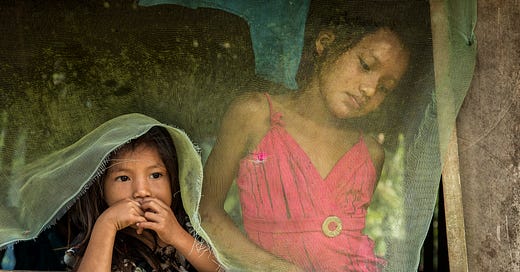




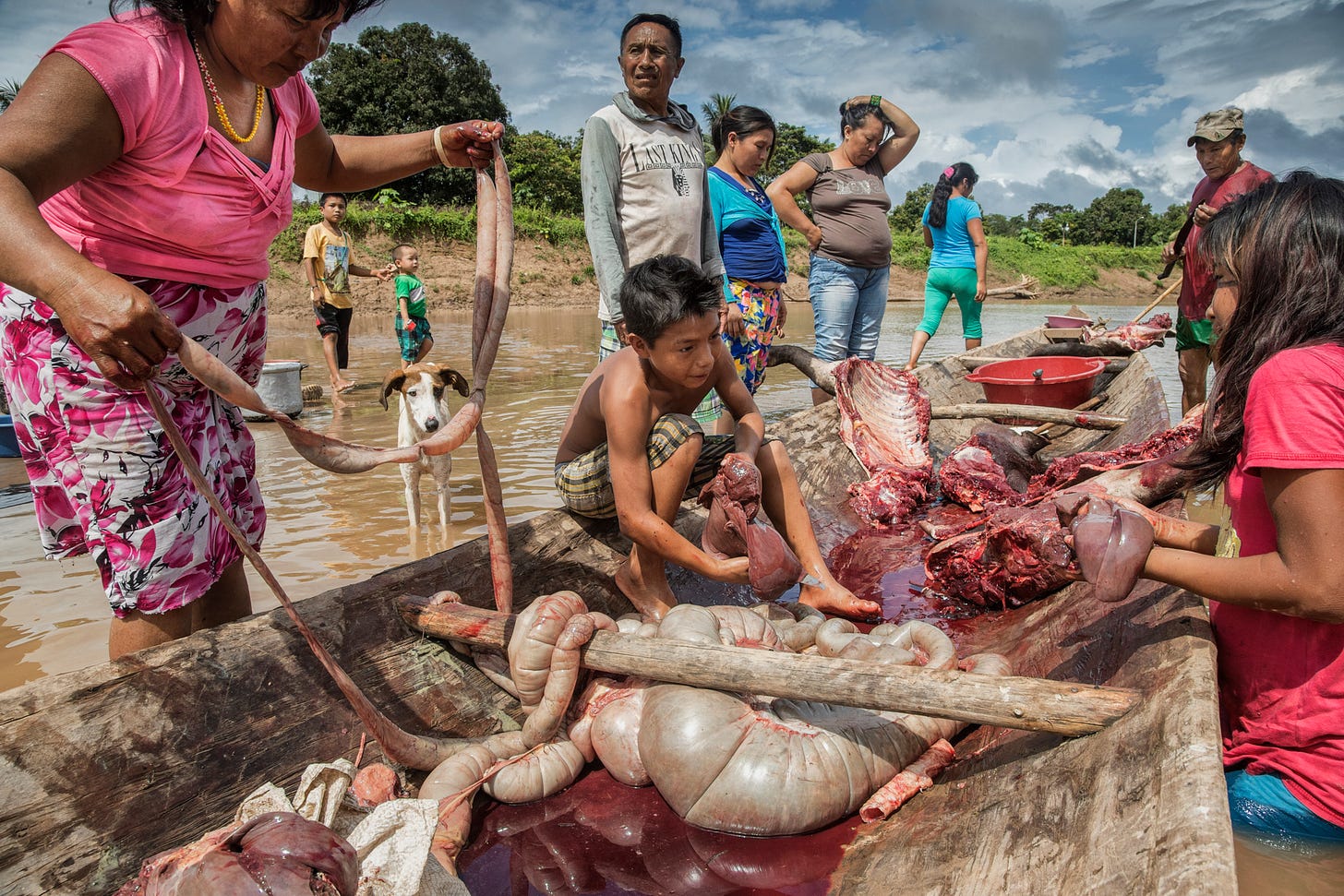


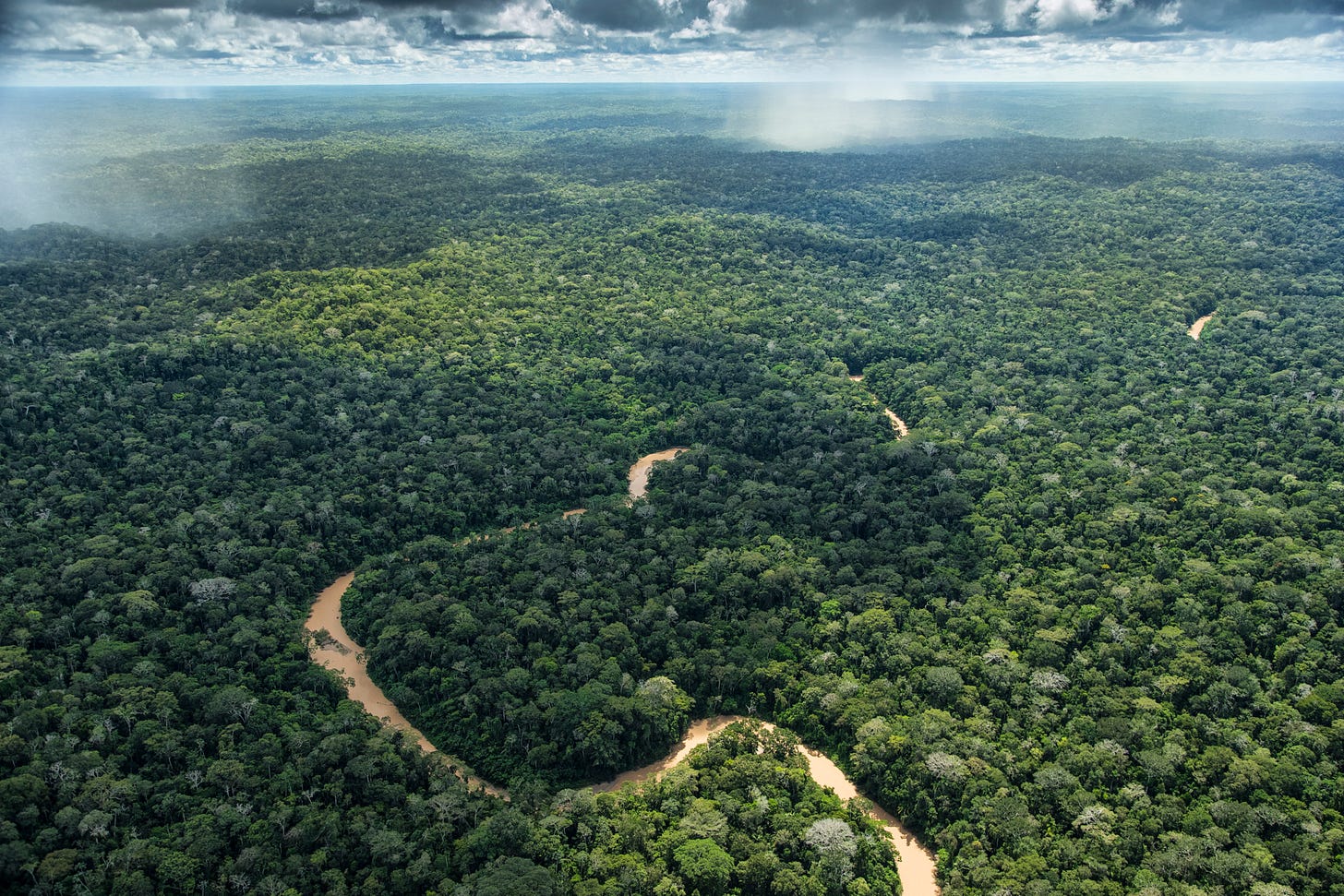
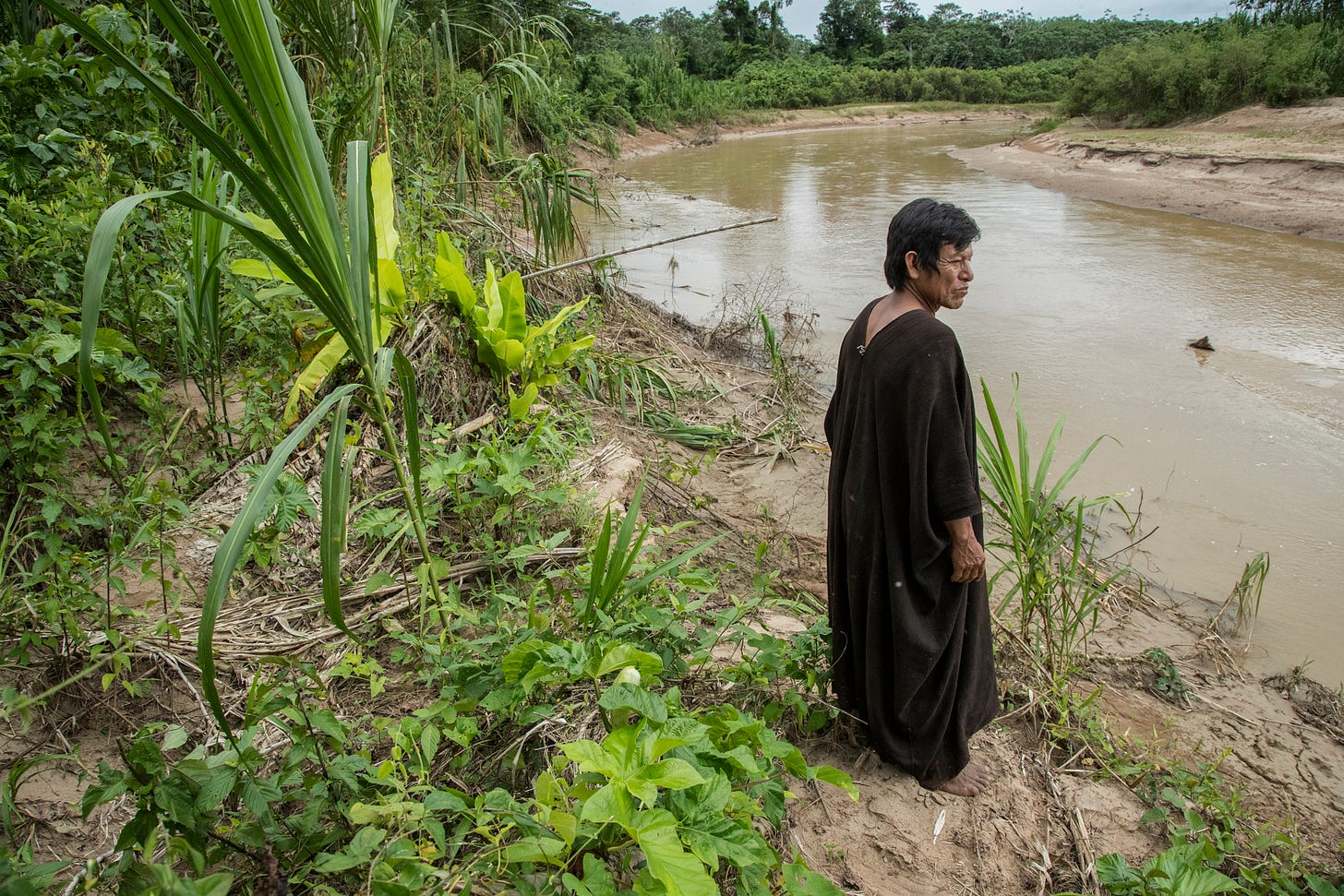

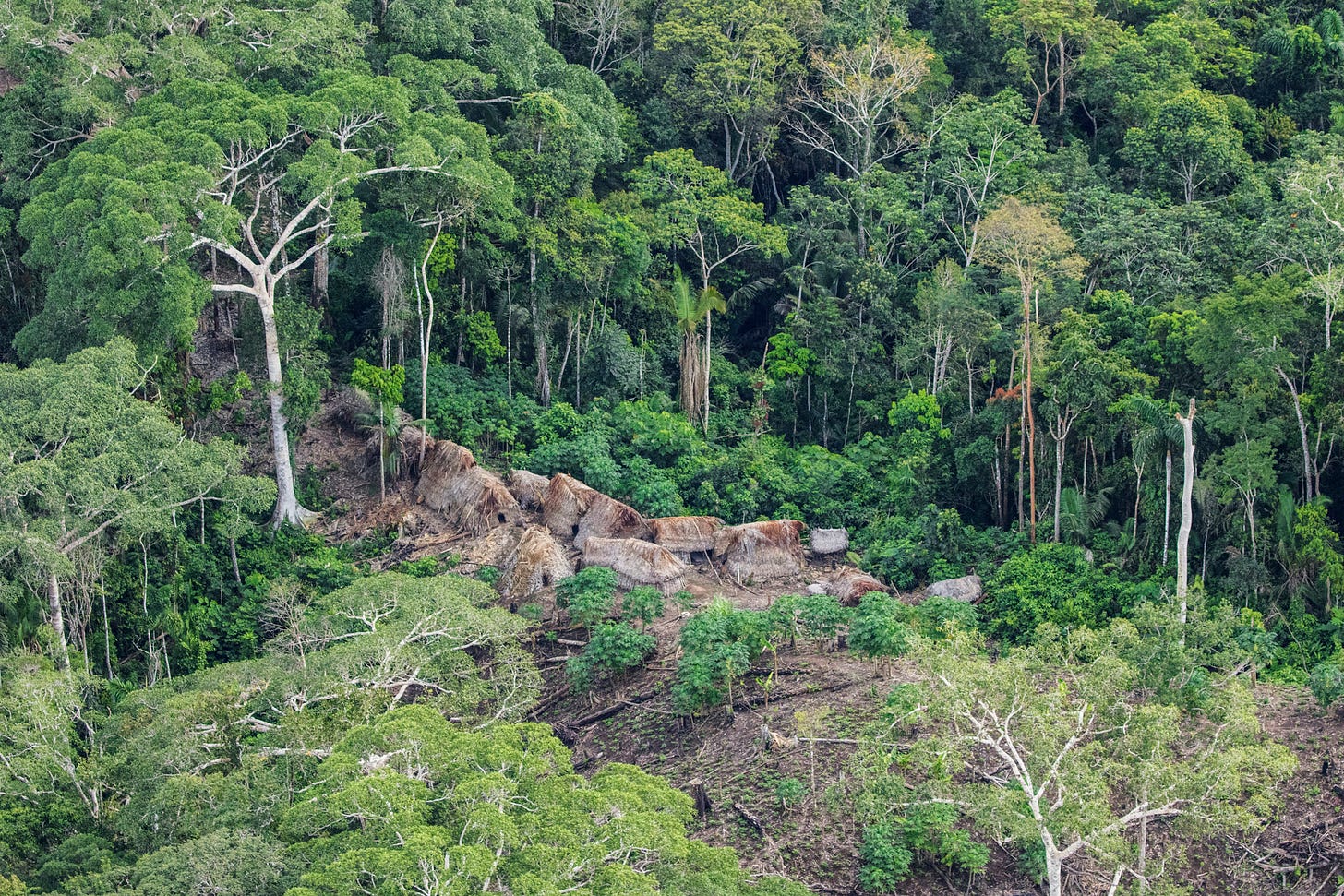
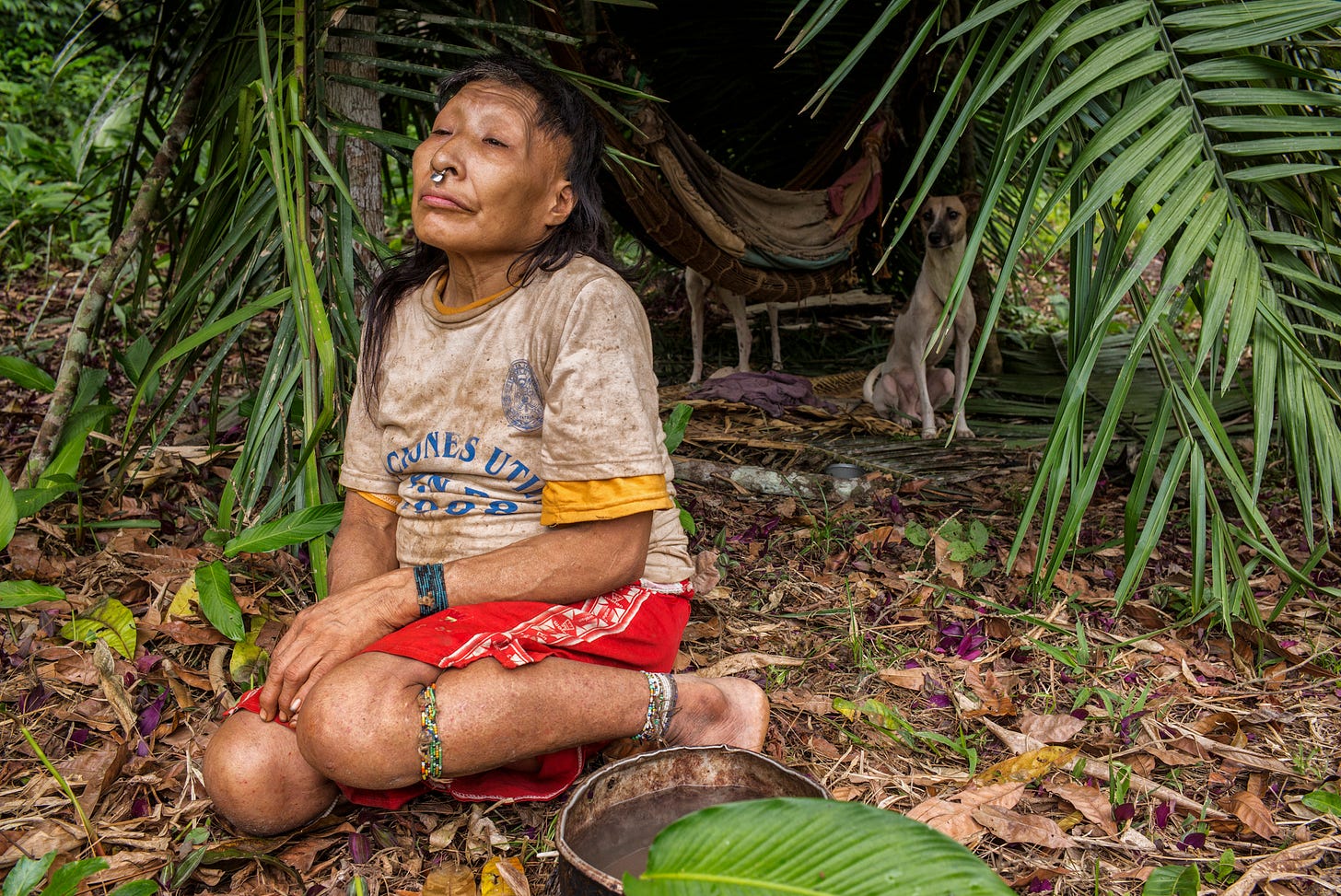



Captivating read. x
What lingers most isn’t just the tragedies—the baby buried with arrows, the starvation, the massacres—but the banality of how they’re treated. Maria, trembling and asking strangers to take her home. Janeth, half-vanished in grief, wearing an Arsenal jersey in the jungle. These aren’t symbols. They’re people. And the world’s failure to deal with that reality feels like the real crime.
“The soul doesn’t wear Nike football tops.” That line stayed with me. Because even as culture mutates and outer signals shift, there’s something deeper that resists full erasure. You captured that contradiction beautifully.